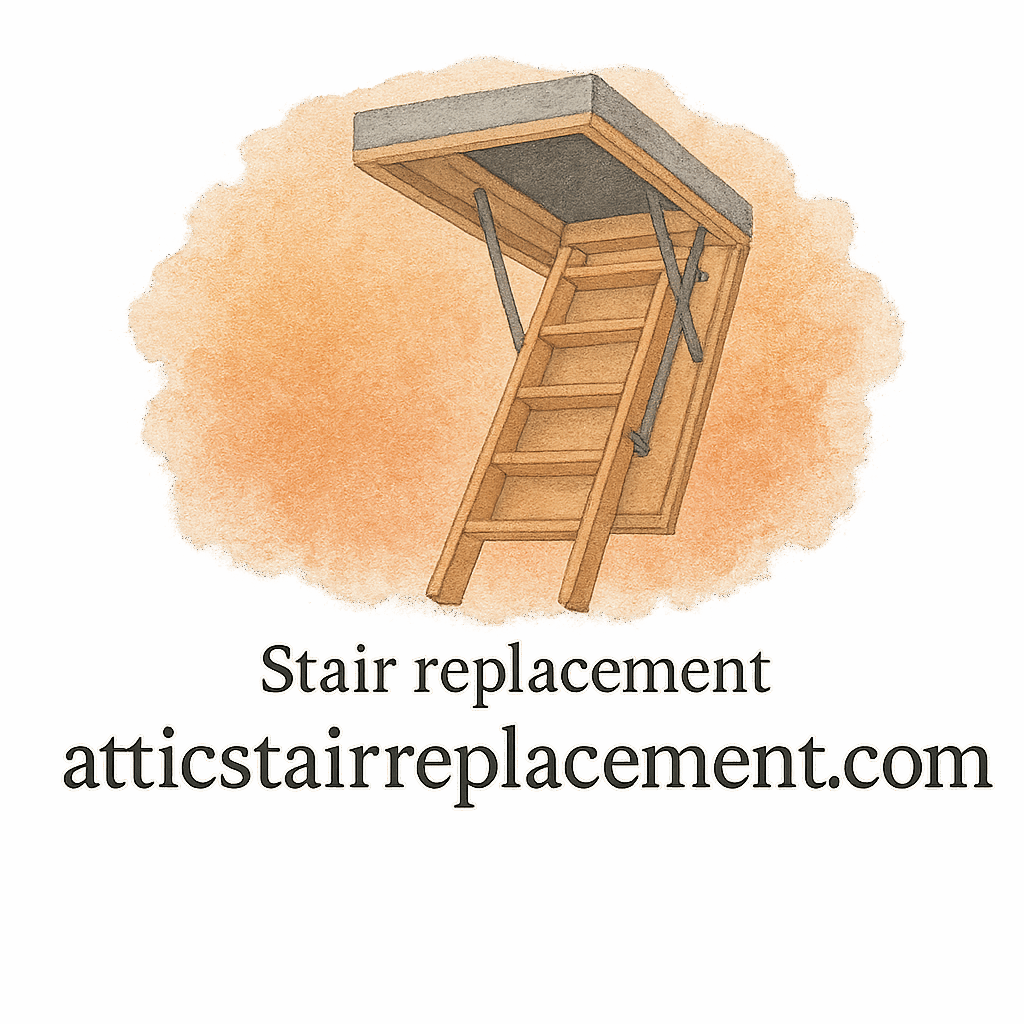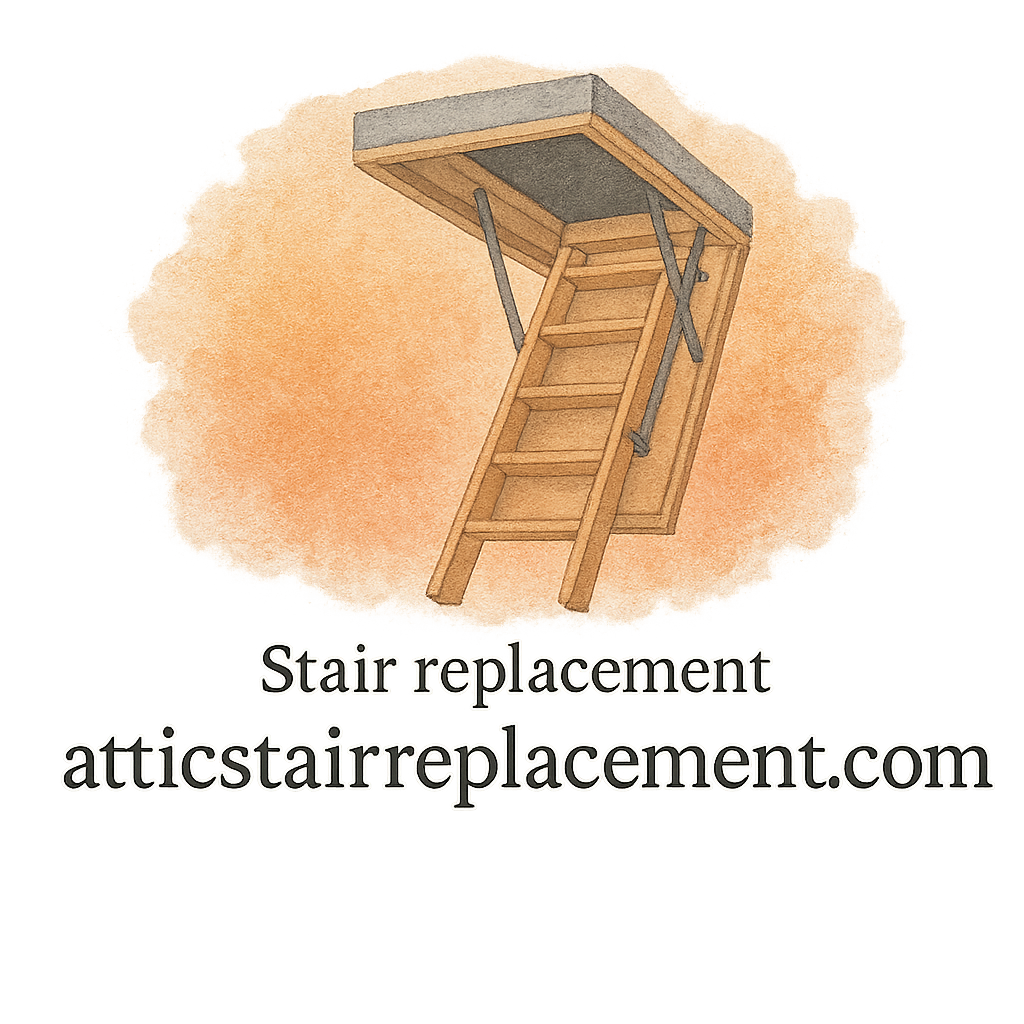Introduction
Replacing attic stairs might sound like a simple weekend project, but here’s the truth—it can quickly turn risky if safety isn’t prioritized. Attic stairs are heavy, awkward to handle, and, if improperly installed, they become a hazard every time you pull them down. That’s why understanding the do’s and don’ts of attic stair replacement safety is essential for homeowners.
In this guide, we’ll break down 11 safety rules that can save you from mistakes, injuries, or costly repairs. Whether you’re a DIY enthusiast or thinking about hiring a contractor, these tips will help you handle your attic stair replacement project with confidence.
Why Attic Stair Replacement Safety Matters
The role of attic stairs in home safety
Attic stairs aren’t just a convenience—they’re a structural element that connects your living space to storage or additional rooms. When installed poorly, they can sag, loosen, or even collapse, creating a danger every time someone climbs up.
Common risks with improper installation
Many homeowners underestimate the risks: falls, injuries from collapsing ladders, and even ceiling damage from poor fitting. By following attic stair replacement safety guidelines, you protect not just your home but also your loved ones.
Do #1: Choose the Right Attic Stair Type
Factors to consider before buying
Not all attic stairs are created equal. Some are lightweight aluminum, while others are sturdy wood or heavy-duty steel. The right choice depends on your attic’s height, available space, and how often you plan to use it.
Best stair types for durability and safety
For frequent use, opt for durable and strong models that handle more weight. For light, occasional use, a budget-friendly wooden ladder may suffice. To compare models and durability, check out trusted product reviews.
Don’t #1: Ignore Weight Capacity
Risks of overloading
Climbing the stairs with boxes, tools, or holiday decorations? If you exceed the manufacturer’s weight limit, you risk breaking the hinges or ladder sections.
Checking manufacturer guidelines
Before installing, always review the specifications. Look for weight ratings—usually between 250 to 350 pounds for standard models. Pushing limits isn’t worth the hidden cost of an accident.
Do #2: Measure Twice, Cut Once
Accurate measurements for safe fitting
A miscalculated cut in your ceiling can mean uneven installation, wobbling stairs, or worse—damaging your home’s structure.
Mistakes to avoid during measurement
Double-check attic opening dimensions, ceiling joist placements, and stair length. For a detailed step-by-step, see this DIY installation guide.
Don’t #2: Use Low-Quality Materials
Why cheap wood or hardware is dangerous
It may be tempting to cut costs, but weak steps, thin hinges, or poor-quality fasteners can quickly wear out. Over time, they fail, risking injury.
Long-term costs of poor choices
Spending more upfront on durable hardware saves money compared to frequent repairs or replacements. Learn more about home improvement investments that pay off.
Do #3: Follow Manufacturer Instructions
Importance of installation manuals
Skipping the manual is one of the biggest mistakes homeowners make. Manufacturers design instructions to keep you safe and ensure proper fitting.
When to seek expert advice
If the manual seems overwhelming, don’t wing it. Turn to expert advice or hire a contractor to ensure the job’s done right.
Don’t #3: Attempt Without Proper Tools
Tools you must have
Basic tools like a level, drill, and safety goggles are non-negotiable. Improvised tools make the job harder and less safe.
Why improvising creates hazards
Using the wrong tool can strip screws, damage wood, or compromise stair stability. That’s one of the top mistakes homeowners regret.

Do #4: Check for Structural Integrity
Ceiling joists and load-bearing points
Before cutting, ensure your ceiling joists can support the new stairs. Weak joists may require reinforcement.
Signs your attic can’t handle new stairs
Cracks, sagging beams, or water damage indicate problems. In such cases, consider a renovation before installing stairs.
Don’t #4: Forget Safety Gear
Essential protective equipment
Wear gloves, goggles, and a dust mask to protect against splinters, falling debris, and insulation dust.
Reducing injury risks
Even pros wear safety gear—it’s a simple step to prevent injuries while working on a home project.
Do #5: Get a Helper
Why two pairs of hands matter
Attic stair units are bulky and awkward. Handling them alone increases the risk of dropping and damaging them—or yourself.
Teamwork makes the job safer
Whether it’s lifting, aligning, or securing bolts, having a helper reduces mistakes and makes the process smoother.
Don’t #5: Leave Loose Hardware
Tightening bolts and screws properly
Every bolt and hinge must be secure. A single loose screw can compromise the entire stair system.
Risks of skipped checks
Loose hardware leads to creaks, instability, or worse—collapse. Always double-check every step.
Do #6: Test Before Regular Use
Step-by-step testing process
After installation, gently pull the stairs down, climb carefully, and check stability. If adjustments are needed, fix them immediately.
Fixing issues before they become hazards
Don’t wait until your first heavy load to find out something’s off. Testing helps prevent long-term issues.
Don’t #6: Neglect Maintenance
Regular inspections and care
Check hinges, bolts, and steps at least twice a year. Apply lubrication where needed and tighten loose parts.
How to prevent long-term damage
Regular maintenance and repair keep your attic stairs safe and extend their lifespan.
Do #7: Consider Professional Installation
When DIY isn’t the best choice
If your project involves structural changes, electrical wiring, or unusual attic designs, leave it to professionals.
Choosing the right contractor
Look for licensed, experienced contractors with solid reviews. It may cost more, but it guarantees safety and quality.
Conclusion
Attic stair replacement doesn’t have to be intimidating, but it does demand respect for safety. By following these do’s and don’ts, you’ll avoid common mistakes, protect your home, and ensure every climb to the attic is safe and secure. Whether you’re going full DIY or hiring a pro, safety should always be your top priority.
For more tips, check out attic stair replacement resources and learn how to keep your home projects safe, efficient, and budget-friendly.
FAQs
1. How often should I inspect attic stairs for safety?
At least twice a year—once before winter and once before summer.
2. Can I install attic stairs by myself?
It’s possible but not recommended. Having a helper makes it safer and easier.
3. What’s the average cost of attic stair replacement?
Typically $300–$800 depending on type, materials, and labor.
4. How do I know if my attic joists can handle stairs?
Check for sagging, cracks, or water damage. If unsure, consult an expert.
5. Are aluminum stairs safer than wooden ones?
Aluminum is lighter and rust-resistant, while wood feels sturdier. Safety depends on build quality.
6. What’s the most common attic stair replacement mistake?
Improper measurements or ignoring weight capacity.
7. Is maintenance really necessary for attic stairs?
Yes! Regular care prevents wear, keeps stairs safe, and extends lifespan.


